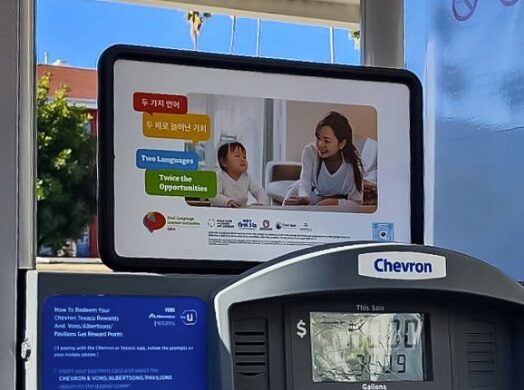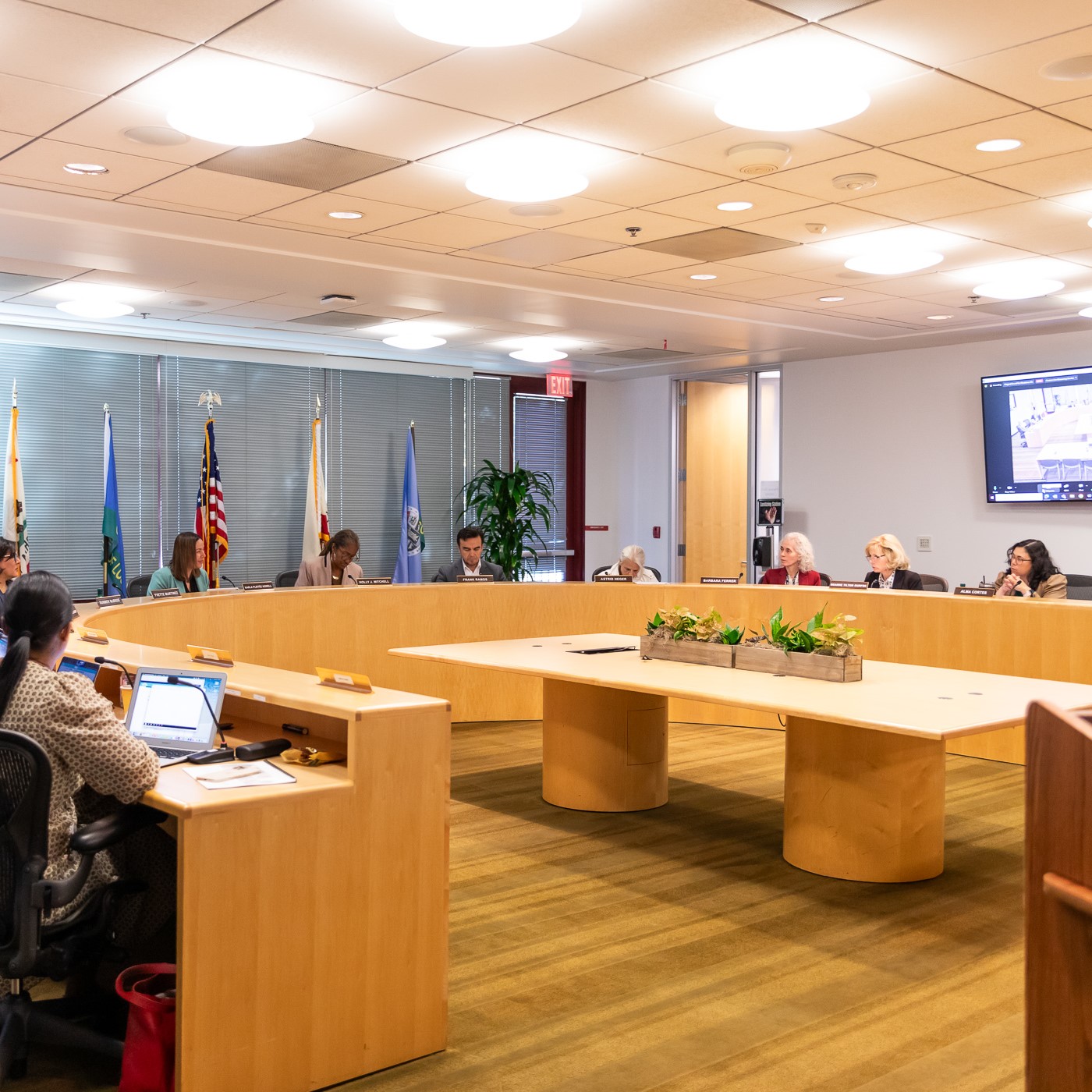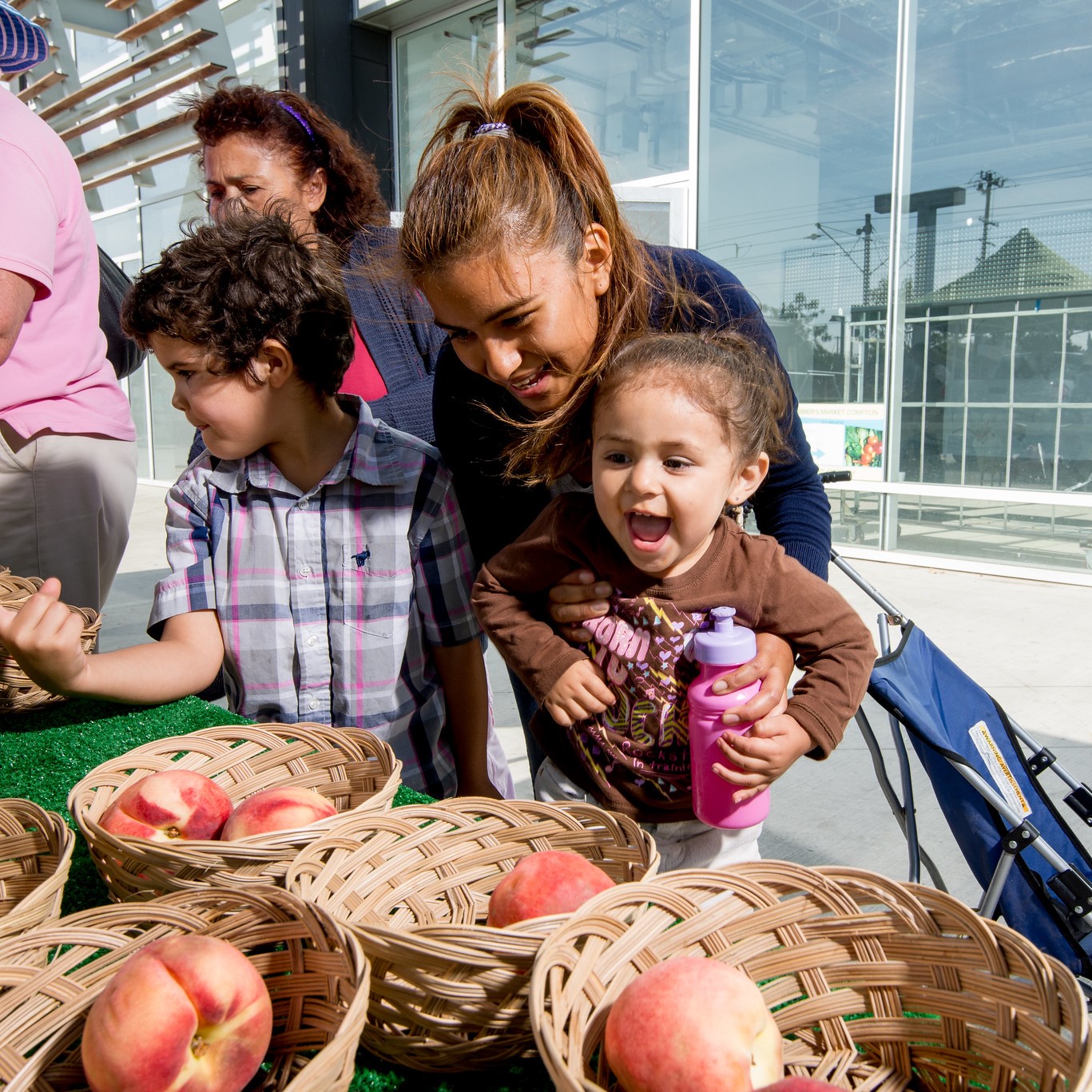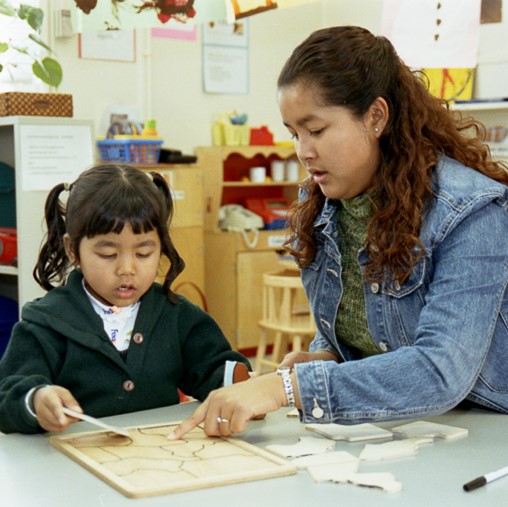Christina Hoag | Freelance Writer |
April 25, 2024
Last year, Spanish and Chinese. This year, Vietnamese, Khmer, Korean and Armenian.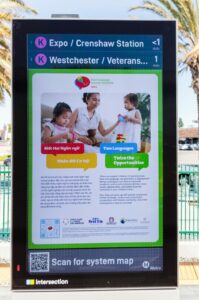 The Dual Language Learner Initiative has launched a new media campaign in four additional languages to encourage increased bilingualism among Los Angeles County children.
The Dual Language Learner Initiative has launched a new media campaign in four additional languages to encourage increased bilingualism among Los Angeles County children.
Thanks to the success of the initial Spanish and Chinese campaign and a $2 million grant from the L.A. County Office of Education, the Initiative’s expansion now includes radio and television spots, digital advertisements, and billboards in four languages that are also widely spoken throughout the county. Colorful brochures will also be handed out to parents through child care and home visiting providers and local libraries.
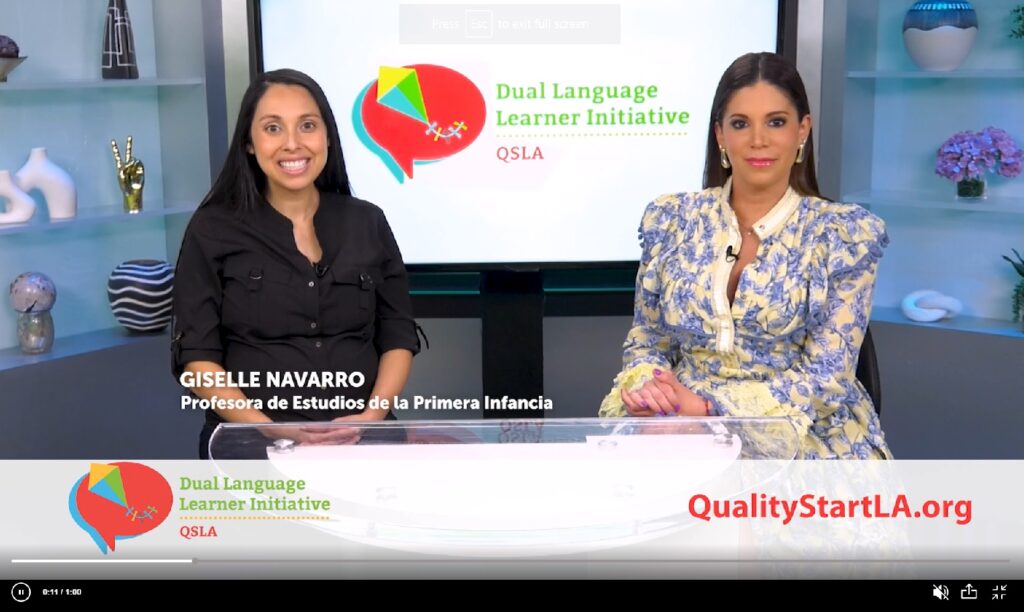
Associate Professor of Early Care and Education, Giselle Navarro Cruz, is interviewed on Telemundo’s Access Total
The campaign aims to encourage parents to teach children their home language because bilingualism benefits people throughout their lives. Research has shown that learning a second language lowers the risk of dementia, expands cognitive flexibility, increases job opportunities and provides greater awareness and appreciation of cultural diversity.
California is the most linguistically diverse state in the nation, and Los Angeles is the most linguistically diverse county in the state. Research shows that nearly 60% of children under 5 grow up in homes where English is not the primary language. In such a multilingual region, adding the new languages was a much-needed development, said Carolyne Crolotte, director of the Dual Language Learner (DLL) programs for Early Edge California, one of the partners in the campaign.
(Click here to listen to an episode of the podcast, “Talking to Grandma,” in which Crolette and First 5 LA Program Officer Gina Rodriguez discuss the campaign.)
“We need to be reaching all of our communities,” she said. “These campaigns uplift the benefits of bilingualism and reach some of our most vulnerable communities.”
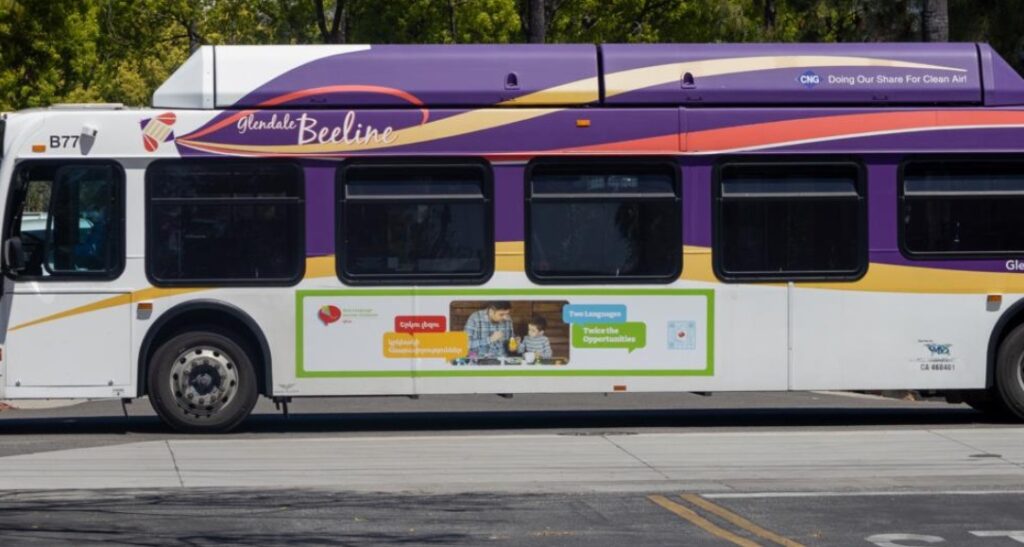
Launched in 2021, the DLL Initiative is being implemented by Quality Start LA, a nonprofit collaborative dedicated to improving the quality of child care for children under age 5 in L.A. County. In addition to First 5 LA, which funded the Spanish and Chinese campaign last year, the collaborative is led by five other early childhood education agencies: the L.A. County Office of Education, the Child Care Alliance of Los Angeles, the L.A. County Office for the Advancement of Early Care and Education, the L.A. County Child Care Planning Committee, and Partnerships in Education, Articulation and Coordination in Higher Education (PEACH). Additional partners include Early Edge California and UNITE-LA.
The communication campaigns align with national and state policies concerning bilingual education, especially in early learning, when children are most open for language development, Crolotte said.
bilingual education, especially in early learning, when children are most open for language development, Crolotte said.
One of the primary goals of the campaign is to dispel the myth that using two or more languages at home will confuse children and hinder their English language learning. Experts say that parents don’t need to worry about children not learning English because they are surrounded by an English-speaking environment. In fact, once children start school, daily use of their home language starts to drop off, making it more challenging to maintain a non-English language.
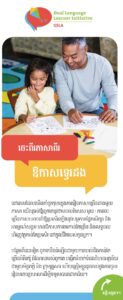 “Children lose that interest,” said Charles Song, a native Cambodian and an active member of the large Cambodian community in Long Beach. Song reviewed Khmer language materials for the campaign.
“Children lose that interest,” said Charles Song, a native Cambodian and an active member of the large Cambodian community in Long Beach. Song reviewed Khmer language materials for the campaign.
The DLL campaign will encourage parents to keep their home language alive, Song said. He also hopes it will boost efforts to establish a Khmer-language dual immersion school in the Long Beach Unified School District. Dual immersion schools offer instruction in both English and another language. “The campaign is a new beginning to bring people to join the force,” he said. “This is a big deal for us. I’m very grateful Khmer was included.”
The lack of bilingual materials for young children in less widely spoken languages in the United States is another factor that can hinder language acquisition.
Author and journalist Chau Nguyen said she wanted to teach her daughter her heritage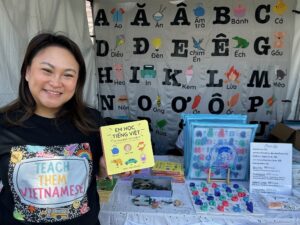 language, Vietnamese, but found few resources existed. So she decided to create her own, penning a small book to teach her daughter the Vietnamese alphabet. Word got out, and soon other parents began clamoring for a copy. The demand was so great that Nguyen decided to team up with an illustrator and formally publish her project as a board book.
language, Vietnamese, but found few resources existed. So she decided to create her own, penning a small book to teach her daughter the Vietnamese alphabet. Word got out, and soon other parents began clamoring for a copy. The demand was so great that Nguyen decided to team up with an illustrator and formally publish her project as a board book.
Today, Nguyen has a series of eight books and two games in a collection she calls “Gemma’s Library” in honor of her daughter. The books focus on vocabulary acquisition — such as colors, numbers and animals — as well as feelings and daily activities. “It’s been a very heartwarming response,” she said. “There’s definitely a need for these types of books.”
As part of the DLL Initiative, Nguyen will be featured in an upcoming Read-Aloud event where she will read from some of her books and engage children in fun activities.
Attitudes and official policies toward bilingualism have undergone a sea-change from 25 years ago. In 1998, California voters passed Proposition 227, a measure that eliminated bilingual education and required public schools to teach all students only in English. The law, which was in keeping with the English-only movement at that time, was repealed by voters in 2016.
The change in attitude has been driven by wider acceptance of multiculturalism and research showing the advantages of speaking more than one language, Crolotte said.
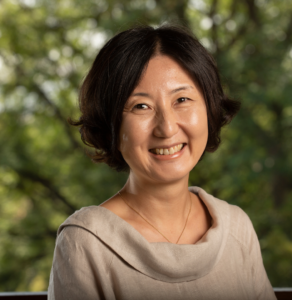
Assistant Professor of Early Childhood Education, Soon Young Jang, Ph.D.
Attitudes among immigrants toward bilingualism have also shifted, said Soon Young Jang, assistant professor in early childhood studies at California State Polytechnic University, Pomona, who specializes in bilingualism and related topics. Jang, who reviewed Korean language materials for the DLL Initiative, explained that previous generations of immigrants focused on blending into U.S. society as much as possible under the belief that “we have to be assimilated in our host country in order to be successful”
Nowadays, more immigrant families want their children to learn their heritage language as a way to connect to their culture, roots and relatives, Jang said.
Still, it’s an uphill battle with few resources to support bilingualism and opportunities to speak languages such as Korean outside the home.
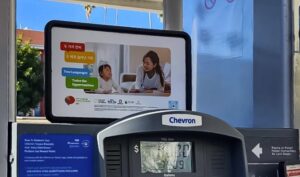 Some families send their children to Korean language programs, often offered at local churches on weekends, but it’s usually too little to become fluent or retain fluency. An ideal way to acquire fluency is to attend a dual immersion school, Jang said.
Some families send their children to Korean language programs, often offered at local churches on weekends, but it’s usually too little to become fluent or retain fluency. An ideal way to acquire fluency is to attend a dual immersion school, Jang said.
“A few hours a week is not enough,” she explained. “The tendency is to become stronger in English and weaker in Korean.”
Featuring easy teaching strategies parents can use, the media campaign to promote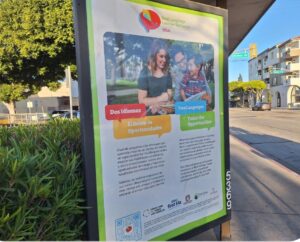 bilingualism will go a long way toward helping build up parents’ confidence to teach children their heritage language, said Giselle E. Navarro-Cruz, assistant professor in early childhood studies at California State Polytechnic University, Pomona, and a consultant for the Dual Language Learners Initiative.
bilingualism will go a long way toward helping build up parents’ confidence to teach children their heritage language, said Giselle E. Navarro-Cruz, assistant professor in early childhood studies at California State Polytechnic University, Pomona, and a consultant for the Dual Language Learners Initiative.
Offering the campaign in as many languages as possible strengthens bilingualism overall. “In California, we see so many languages,” she said. “It’s important to value all languages.”
